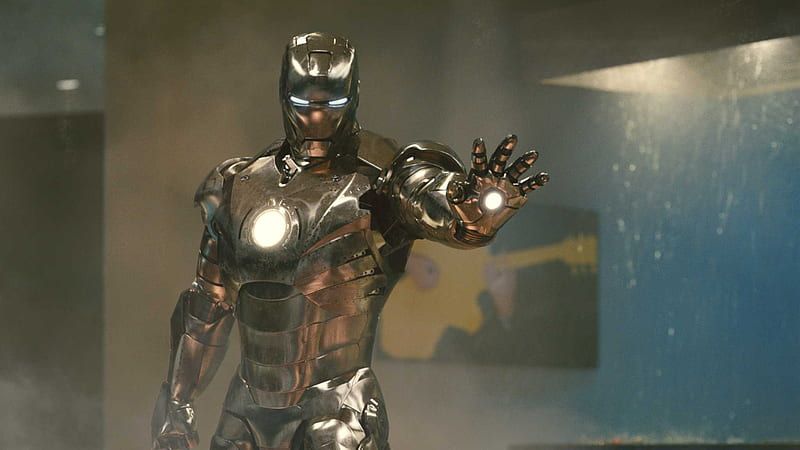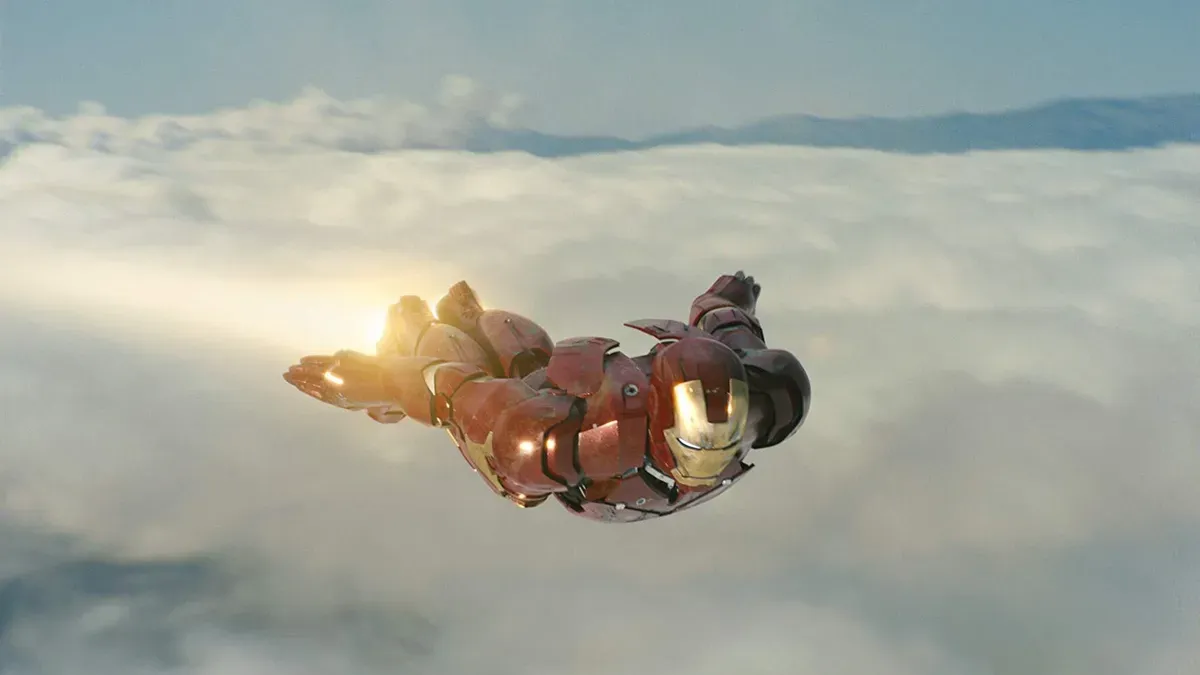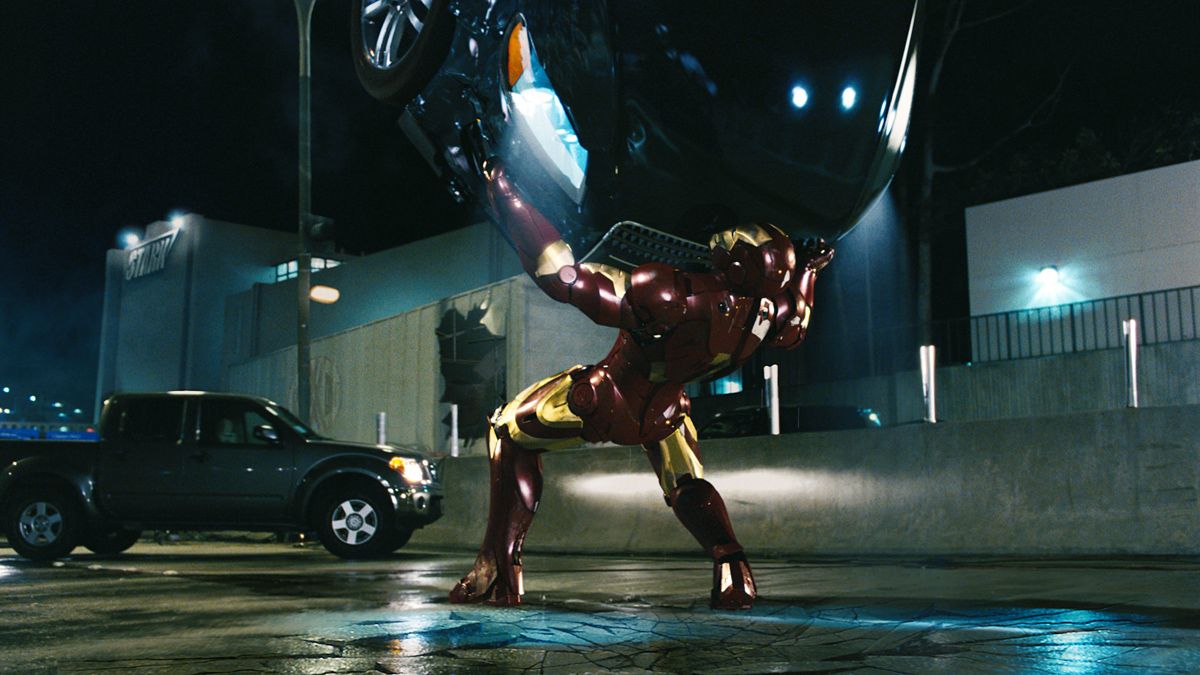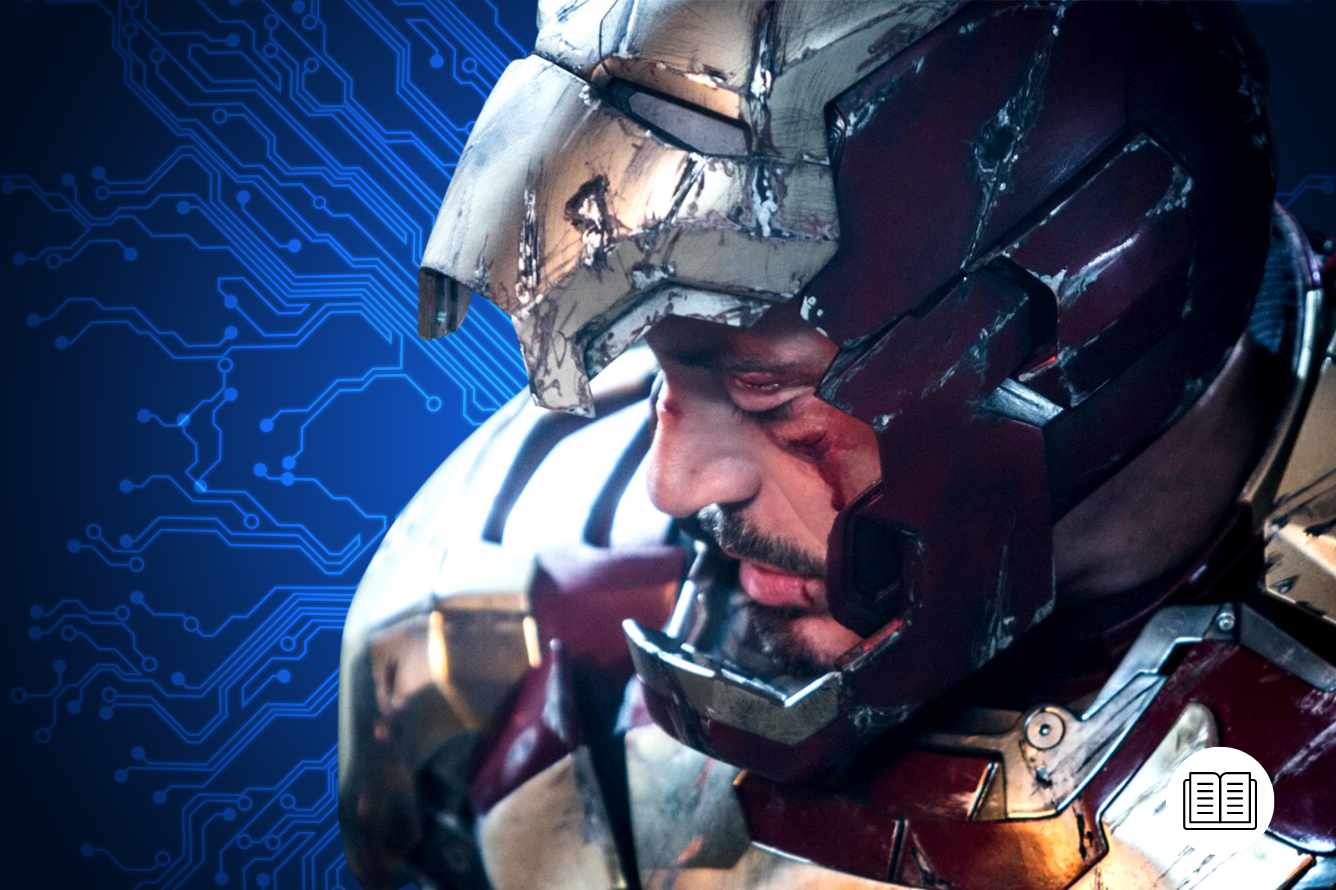“Tony Stark was able to build this in a cave! With a box of scraps!”
The Iron Man suit is one of the most iconic symbols of the Marvel Cinematic Universe, ranking alongside Captain America’s shield and Thor’s Mjolnir. It would be fair to say that without the success of Iron Man, there would be no MCU.
What makes Iron Man so fascinating is that, unlike other superheroes in the MCU, Tony Stark (Robert Downey Jnr) had to engineer his success – literally. Stark was not born with supernatural abilities like Thor (Chris Hemsworth), or injected with a super-soldier serum, like Steve Rogers (Chris Evans). Instead, Stark relies on his engineering ingenuity to succeed. And Tony is most definitely an engineer.
“You can take away my house, all my tricks and toys, but one thing you can’t take away – I am Iron Man.”
The first Iron Man (2008) has a more realistic portrayal of technology than the later films. The suit-up scene in Iron Man takes a long time, as one would expect for a full-body exoskeleton. Whilst we can synthesize new elements (Einsteinium was created in 1952), any synthesized elements are incredibly dense and, unlike in Iron Man 2 (2010), would be unusable near humans due to being radioactive. Also, nanotechnology is not able to magically regrow itself, as portrayed in later films.

What we saw in the first film was aligned with reality, of sorts, but the later movies were most definitely not as Iron Man’s director, Jon Favreau, explained in an interview:
“After the first film, a number of tech companies talked about how uncanny a lot of our depictions of technology had turned out to be, and how many different films and videogames ended up being inspired by the imagery we used. This forced us to go a bit further into the future, and try and change the nature of this technology. If we’d just duplicated what happened in the first one, we would be behind the curve. So now we’re dealing with holograms, the interface within the suit, and the suit being upgraded too.”
Flight: Making a Super Sonic Man Outta You
“Yeah, I can fly”
Flight has been a perpetual dream for humanity. This is why the future has been portrayed with jet packs, hover cars, and rocket boots from pretty much the second we nailed the airplane. Hence, one of the first technologies that Tony Stark creates is flight functionality for Mark II of the Iron Man suit.
The Iron Man suit flies using thrust generated from the feet, with inertial guidance from the gloves. This essentially allows the wearer to achieve supersonic flight and keep pace with F-22 Raptor jet fighters.
Whilst flying suits may seem fanciful, we do already have this technology, such as the Gravity Jet Suit, with which the Royal Navy recently conducted successful boarding exercises.
The Gravity Jet Suit is powered by five micro gas turbines, which use four liters of fuel per minute to generate 1000bhp. Rather than flying like a rocket, the jet suit essentially floats the user to where they want to be, with the core uplift generated from one turbine on the wearer’s back, plus two on each arm for stability and maneuverability.
In Iron Man, take-offs and landings are, generally, fairly realistic. With the feet and hand thrusters pointed downwards, uplift is generated in a similar fashion to the Gravity Jet Suit. It is when the Iron Man suit is flying horizontally – superhero style – that the science starts to break down.
In forward flight, when thrust is only generated from behind, the Iron Man suit essentially acts like a rocket or a plane, except it doesn’t have any wings (to generate lift) or fins (for stability), and is about as aerodynamic as, well, a billionaire wrapped in steel. There is also no attempt to provide uplift, which would at least allow the suit to maintain altitude. In reality, when flown like that, the Iron Man suit would fly straight into the ground, headfirst.

Rapid deceleration, such as when Iron Man deploys flaps to evade the F-22s, is also a problem. This is why planes come to a gradual stop on a runway. Sudden changes can place incredible strain upon the human body, leading to tunnel vision and unconsciousness, whether the person is protected inside a vehicle or not. This is why astronauts and pilots are trained to withstand G-forces.
There is also an issue with Iron Man’s superhero landings, such as the suitably dramatic moment during the Ten Rings attack of Gulmira in Iron Man … Whilst superhero landings look amazing, they would also play havoc with the body (see: Deadpool 2).
“Superhero landing! You know, that’s really hard on your knees. Totally impractical; they all do it.”
Strength: Buns of Steel
“The suit and I are one.”
The Iron Man suit is sufficiently strong to lift cars and punch through concrete walls.
The mass of an average-sized car is around 1,500kg (approximately 3,360 lbs), hence we can estimate how powerful the Iron Man suit is. Since force is equal to the mass of an object multiplied by acceleration, using acceleration due to gravity of 9.81m/s² gives us 1500 x 9.81, which is nearly 15kN. This is similar to the lifting capacity of the small dockside cranes used for unloading fishing vessels.
One of the problems with carrying heavier loads is that we not only have to be strong enough to move the object, but our musculature also needs to be sufficiently resilient to withstand that weight. It is for this reason that back problems are common injuries.

Despite powered exoskeletons seeming like pure science fiction, the military has been developing exoskeletons that will allow soldiers to carry more weight for longer periods of time. Prototype exoskeletons are being developed to assist warehouse workers carrying heavy loads, such as the suits being trialed at Delta Airlines, which allow the wearer to lift up to 14st. (nearly 90kg) for up to eight hours. Meanwhile, prosthetic suits are also being developed to give people with disabilities a greater degree of mobility.
The Iron Man suit acts as a powered exoskeleton, by amplifying the wearer’s strength and reinforcing their structure, allowing the wearer to not only lift a far heavier object but withstand the stress of carrying that weight. By having the Iron Man suit act as an all-encompassing suit, it essentially becomes a full-body prosthesis, allowing the wearer of the suit to be fully supported whilst lifting incredible loads with ease.
Impact Protection: Rolling with the Punches
“Iron Man. That’s kind of catchy. I mean it’s not technically accurate.”
The Iron Man suit is seemingly impervious to conventional weaponry, up to and including tank shells and 20mm rounds from the M61A2 Vulcan rotary cannon on an F-22 Raptor… barring some slight blemishes to the paintwork.
This protection is apparently afforded by the titanium-gold alloy it is made from. Whilst it is true that we already have armored vehicles and bullet-proof vests, they are often bulky items. For example, the armor at the front of a battle tank is over 30cm of steel. Likewise, the armor worn by bomb disposal teams is incredibly cumbersome and typically weighs 80lbs (36kg), which is about the same as a ten-year-old child.
That said, titanium-gold is a genuine alloy, with higher yield strength, tensile strength, and hardness than either of its constituent metals. Researchers also discovered in 2016 that the intermetallic titanium-gold alloy, known as β-Ti3Au is nearly four times harder than titanium.

Unfortunately, gold is also an incredibly dense material, making it much heavier than even lead. This makes it impractical for flight, as materials have to be as light as possible for minimising the overall weight. The heavier an object, the more difficult and inefficient it is to fly. This, amongst other reasons, is why modern jet fighters (such as the aforementioned F-22 Raptor), rely not on armor for their defense but on maneuverability, radar jamming, and ever more sophisticated sensors.
A titanium-gold alloy could afford a reasonable level of impact protection against low-mass objects, such as shrapnel. However, the Iron Man suit is portrayed as saving the wearer when they are slammed into hard surfaces, such as when Stark is shot out of the sky by a tank shell and falls to the ground. These types of impact are different. Instead of something small hitting the Iron Man suit, it is the suit that is hitting something much bigger (the ground). In these instances, as well as having to negate the energy from the impact it also has to deal with the sudden deceleration.
In reality, this close-fitting suit would do little to protect the wearer from this sort of impact. When the wearer is slammed into concrete, it is the instant deceleration that causes most of the injury.
In instances where the Iron Man suit falls so hard that it leaves a crater, in all likelihood the wearer would suffer major internal bleeding and their spine would be shattered. Thick padding or gas-cushioning would help with minimizing impact injuries, but there does not appear to be space for this.









